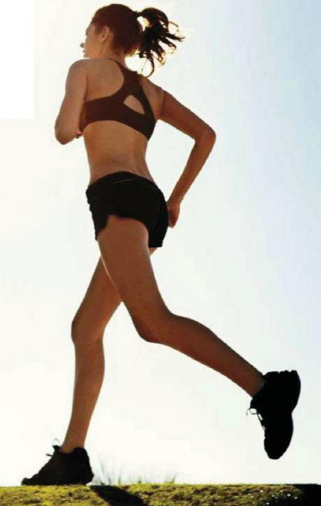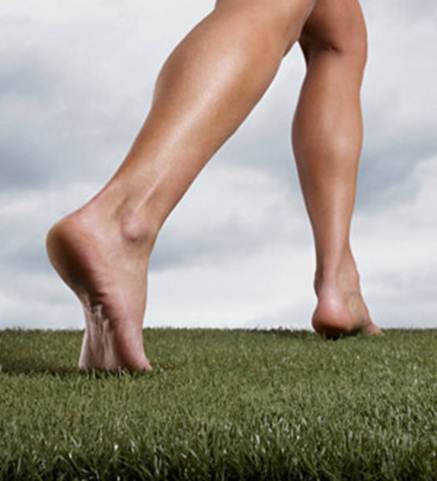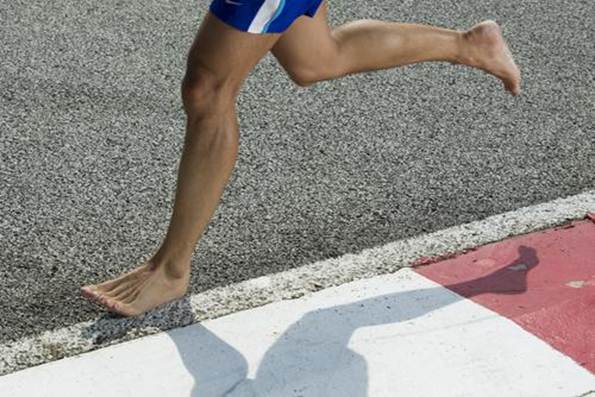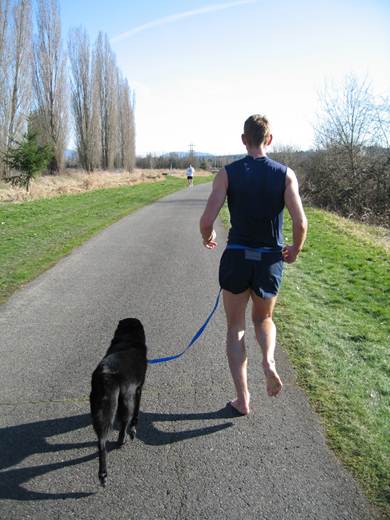Could increasingly popular styles
like barefoot running be your ticker to running without pain? Before you ditch
your trainer, red on.
South Africans love to run. And just as we
may lope, shuffle or glide through our paces, we pay attention to how we run,
and what helps us to run better or more efficiently – or with a more
competitive edge. With this in mind, we often focus on the biomechanics of
running and how our running shoes – or the lack of them – help us to run faster
or stay injury-free.

The
Running Revolution
There’s much debate about whether barefoot
running makes you a superior runner. Proponents like renowned US professors
Daniel Lieberman and Irene Davis argue it’s a more “natural” way of running and
running shod is abnormal. “Though evidence shows our ancestors have been
wearing shoes since between 26 000 and 40 000 years ago, US paleoanthropologist
Erik Trinkaus has argued). But literature on the topic doesn’t seem to favour
one or the other, says podiatrist Dr. Kevin Kirby in his Podiatry Today
article, ‘Barefoot Running Versus Shod Running: Which is Best?’
What is barefoot or minimalist running?
Running barefoot, or in lightweight
minimalist shoes that mimic the barefoot condition, is a training method that
advocates landing on your mid or front foot, as opposed to your heel, when you
run. The claim is that it’s a less high-impact activity than shod running.

What is barefoot
or minimalist running?
Barefoot running fans claim you’ll end up
with fewer injuries if you run barefoot, because you’re not putting as much
force on your joints. A 2009 study in The Journal of Injury, Function and
Rehabilitation shows that running in trainers featuring increased heel
cushioning and mid-arch padding led to a 38 percent greater torque on the knees
than did barefoot running.
According to sports scientist and SHAPE
advisory board member Dr. Ross Tucker, who’s working on a research study on
barefoot running, less impact is obviously a plus. However, the benefit exists
only if you run correctly. The tricky part is retraining your body and
acquiring the necessary “skill” to run effectively without shoes.
“Evidence shows that beginners, on their
first exposure to barefoot running, don’t do it particularly well,” he says.
“Ideally, heel strike should be reduced. But about 70 percent of these runners
still hell strike, so they experience higher impact forces and loading rates on
the joints than when they’re running in shoes, which provide most of the
cushioning at the heel. The implication is that some people may be better off
but others are worse off, and right now, we can’t predict who is who.” One of
the dangers is that runners will assume that minimalist shoes may give them an
injury-free “pass”, but this isn’t necessarily the case.

“Currently,
there’s no conclusive evidence that impact forces during hell-toe running are
responsible for development of running-related injuries.”
Dr. Benno Nigg, a researcher in foot and
lower extremity biomechanics, wrote in Biomechanics of Sports Shoes (Human
Kinetics Publishers): :Currently, there’s no conclusive evidence that impact
forces during hell-toe running are responsible for development of
running-related injuries.”
Injury prevention is about what works for
the individual, says gait biomechanics researcher Dr. Reed Ferber, director of
the Running Injury Clinic in Calgary, Alberta, and professor of kinesiology at
the University of Calgary (Canada). “There’s no ideal running form, so the way
someone runs is dictated by the way she’s built, her anatomical alignment,
strength and flexibility,” he says. “We strongly encourage people not to change
their running form in an effort to treat or prevent injuries unless they’re
first considered all of their biomechanics.”
Prof
1. Barefoot running appears to be more metabolically efficient than
shod running. According to Dr. Kirby, running in shoes increases oxygen uptake
as well as perceived exertion and heart rate. “The mass of a running shoe –
300g on the end of each leg – is actually a big deal,” says Dr. Tucker.
2. The ability to feel the ground. Dr. Tucker says this may help your
running technique by making you lighter on your feet, probably because it
changes the way you activate your muscles.
3. Potentially less impact on joints – but we’re qualified this above.
Cons
1. You may exchange one set of injuries for another, says Nicholas Tam, exercise scientist at the UCT/MRC Research Unit
for Exercise Science and Sports Medicine based at the Sports Science Institute
of SA. He says barefoot running is often touted as a rehabilitation solution
for people who struggle with nagging injuries. You need strong calves and
ankles to go barefoot.
“There may be
less impact on knees for example, but a much greater load on your Achilles
tendon,” says Dr. Ferber.
2. There’s a slightly increased risk of foot injuries, like stress fractures and tarsal tunnel syndrome, according to Dr.
Tucker.
3. You can get injured from standing on
things or bruising your feet. “being barefoot restricts where we can run,” says
Dr. Tucker. “Generally, you can run quite easily on tar, but you have to stay
off pavements and can’t go off-road easily.”
Fast-track tip
Start slowly. “Muscular adaptation takes
time. You may be literally going back to basics and unlearning 20 years’ shod
locomotion. Unless you’re cautious you may do more harm than good,” says Dr.
Tucker.
Begin with one minute of barefoot running.
Go for your normal run; when you’re about 200m from home, take off your shoes,
and jog barefoot. Do this for a few days. Gradually increase to two minutes,
then three. By the third week, you’ll be running the final kilometre barefoot,
and can build slowly from there. Generally, your feet will limit how far you
can run, as the skin will feel sensitive if you push too far. This is a
“handbrake” that may actually help you manage how you train.

Begin
with one minute of barefoot running. Go for your normal run; when you’re about
200m from home, take off your shoes, and jog barefoot
Minimalist shoes: These shoes allow you to
run more comfortably on some surfaces. Dr. Tucker suggests that when you’re
ready to run further barefoot, buying a pair may be practical. But he cautions
that you may then be tempted to ramp up the distance too fast. Don’t make
drastic changes simply because it “feels good”.
Some runners adapt more quickly than
others. But because everyone’s mechanics are different, you may not be one of
those who “takes” to barefoot or minimalist running. The bottom line? Try it if
you’re keen, but don’t force it. At worst, though, it’s a great training tool
because it allows for training adaptations.